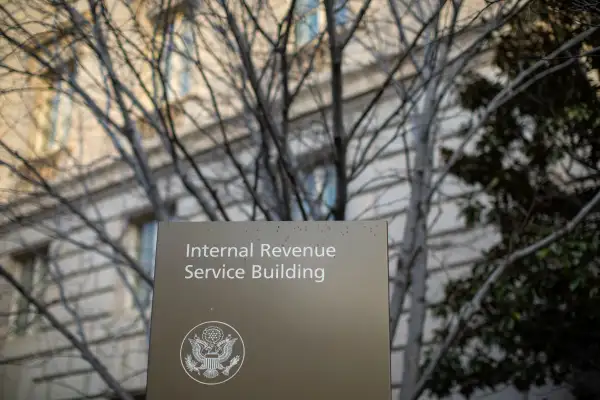The IRS Is Making it Easier to Avoid Tax Penalties This Year. Here's How

The IRS urged taxpayers last year to do a "paycheck checkup" to make sure they were withholding enough from their paychecks to satisfy their obligations under the new tax law. But on Wednesday, the agency acknowledged in effect that the changes to the tax code could be confusing and said it would relax the penalty for not withholding enough from paychecks or quarterly estimated payments in 2018.
Last February, the IRS changed the guidance it issues employers pertaining to how much in taxes they should withhold from employees’ paychecks. The lower rates were meant to make the impact of the 2017 Tax Cuts and Jobs Act more visible to ordinary Americans by boosting the amount in their paychecks. The Treasury Department said 90% of workers could see higher take-home pay as a result.
The flip side of this “pay raise" is that some taxpayers haven’t been paying enough to the IRS over the course of the last year, and early last year the tax prep industry started raising red flags about under-withholding. In the past, taxpayers have had to come within 10% of the correct amount of withholdings to avoid being assessed penalties by the IRS. On Wednesday, the IRS said it would lower that 90% threshold to 85%, giving taxpayers a little more wiggle room. This is the form for under-reporting.
Although the agency published an updated withholdings calculator last year that taxpayers could use for their "paycheck checkup," tax policy experts warned that people might not do so, and accounting experts said the complexity of the calculator could lead people to make mistakes if they attempted it.
“Unless you understand taxes, it’s not something you should fully rely on,” certified financial planner Debbie J. Freeman told CNBC.
Since the IRS didn’t fully account for factors like changes to deduction and exemption eligibility, the upshot is that more than 20% of taxpayers weren’t paying enough in taxes throughout 2018, according to estimates by the Government Accountability Office. Many of these people will see a smaller refund than they’re used to, or will face a surprise tax bill in April.
Most likely to be affected are people with more complex returns, says Craig Richards, director of tax services at wealth management firm Fiduciary Trust Company International.
“It’s folks most likely that aren’t just W-2 people. If you’re purely a wage earner and you had your W-4 on file, you’re probably OK,” he says.
The taxpayers most likely to be affected are people with significant non-wage income like investment gains, those who live in states with high real estate and income taxes, and dual-income families — especially ones in high cost-of-living states — in which one partner receives a W-2 and the other is a small-business owner or self-employed with a job in a high-earning field, such as a doctor or lawyer.
The scope of the changes to the tax code makes it likelier more taxpayers would have missed the 90% threshold for 2018 tax withholdings, says Craig Wild, managing partner at tax and accounting firm Wild, Maney & Resnick.
“We’re seeing more and more people under-withheld,” he says.
Compounding the issue, Wild says, is that some of the technicalities — the kind of nitty-gritty details that can confound even the pros — haven’t been clarified yet by the IRS, more than a year after the new tax law went into effect.
The partial government shutdown doesn’t help. Although the Trump administration recalled 46,000 workers to process tax returns, more than 40% of the IRS workforce is still furloughed, with no end in sight.
“There’s not a whole lot of clarity about how that’s going to all pan out, even as we’re starting to do returns,” Richards says.
